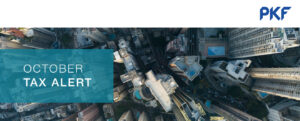Within tax reform currently underway in Angola, a new transfer pricing regime was recently introduced. The following article explains further.
New Transfer Pricing Rules in Angola: What Do They Mean?
Susana Pinto
KPMG
Susana Pinto is a member of the KPMG’s transfer pricing team and Director of the Angolan practice.
The introduction of this new regime follows a worldwide trend. In fact, in the last few years many countries have been introducing transfer pricing rules, including countries such as Kenya, Nigeria, Egypt, Zambia, Tanzania and Morocco, among others, in line with South Africa.
While the Angolan transfer pricing rules do not follow the OECD Guidelines, the arm’s length principle adopted by the Angolan legislation applies to internal and cross-border commercial and financial transactions established between a taxpayer and its related entities, beginning or occurring on or after January 1, 2013, meaning the terms and conditions on those transactions should be substantially identical to those which would have been contracted, accepted and used between independent entities in comparable circumstances. Specific rules apply to the definition of a related entity, similar to the transfer pricing methods adopted in the Angola legislation.
In a developing country where its economy is mainly dependent on the oil and gas industry and where the government has been promoting public and private investment in the last decade after a period of civil war along with foreign investment growing exponentially in the last few years, what is the real meaning of the transfer pricing regime for local taxpayers?
The recent implementation of transfer pricing rules in Angola provides a number of challenges for not only multinational companies but also for domestic companies. From documentation requirements to expect audit practices and penalties for noncompliance, multinationals will need to be prudent with their investments into Angola; in particular with consideration to other regulations imposed by the National Private Investment Agency and the Central Bank as import and export duty controls are expected to receive additional scrutiny in future.
All changes and new rules are a learning process for all stakeholders involved, from the tax authorities to foreign investors to local economic groups.
I. Angola’s Business Environment
Many international companies are attracted to and investing in infrastructure in Angola 1 in the areas of: transportation and networks of roads, railways and sea ports, health, education, housing, energy and power, communication, and agriculture.
1 It is estimated that the expense associated with foreign direct investment can be up to USD 2.1 billion per year over the next decade.
In addition, local companies have been unable to add value to raw commodities and natural resources; thus, the government has been providing support and training for those companies to participate in the supply chain namely of large oil companies. 2
2 Such as the agency Centro de ApoioEmpresarial, in collaboration with the Angolan government, international and national oil companies.
Also, a small number of relevant Angolan business groups facing an exponential growth and with a high financial capacity have started to expand their activity overseas, not only in other African countries, but also on other continents.
As common within business groups, foreign investment is generally followed by intra-group transactions. Indeed, strategy, know-how, technology, management, funding, back office support is at the disposal of its branches or subsidiaries, leading to input intragroup transactions for Angolan taxpayers in accordance with the value chain and the business models adopted by each economic or financial group. Moreover, raw materials and other goods and technical expertise not locally available in sufficient quantity or number to support the demand increase the need for imports. Thus, intragroup transactions are increasingly important to local investment, underlining the growing importance of global supply chains.
Undeniably, trade and foreign direct investment, together with a greater geographical spread of income growth and opportunity, is integrating a growing number of countries – including Angola – into more extensive international exchange. Higher income and larger populations will put new strains on both renewable and non-renewable resources, calling for careful resource management.
Thus, the local tax authority is seeking a more effective way to protect its tax base as per with the introduction of the transfer pricing regime in Angola. Moreover, given the mismatch of the corporate tax rates of the countries involved (35 percent in Angola 3 , foreseen to decrease to 30 percent in FY15) and the inexistence of double tax treaties (DTT) with Angola 4 .
3 Notwithstanding local investment incentives promoted by the National Private Investment Agency (ANIP).
4 Task forces have been working on this subject, but it is still unpredictable to announce the timing when Angola will celebrate DTT with other countries.
To add, foreign exchange currency risk and tight control procedures on the remittance of funds are still an issue, which may impact the price of the intra-group transactions.
II. Documentation Requirements
What compliance rules should Angolan taxpayers need to comply with under this new regime?
Taxpayers that are subject to the new transfer pricing regime and carry on intra-group transactions need to prepare transfer pricing documentation. This obligation applies to taxpayers with an annual turnover equal to or greater than 7 billion Kwanza (70 million US dollars), as well as to taxpayers included on the Major Taxpayers List and taxpayers developing their activities in the financial, oil and gas, diamond and telecommunication sectors.
The transfer pricing documentation must be prepared in Portuguese and submitted to the National Directory of Taxes by the end of the sixth month after the fiscal year closing date.
The Angolan transfer pricing legislation foresees that the transfer pricing report should contain the following structure: (i) executive summary; (ii) macroeconomic overview; (iii) company description; (iv)functional analysis; (v) identification of related-party transactions; and (vi) economic analyses of related-party transactions.
III. Transfer Pricing Methods
Given the complexity of this regime, its introduction in Angola was to be instituted first in the financial services sector and subsequently to the oil and gas sector and other industries, although the final rules, as published, applies to all taxpayers, irrespective of the industry. Thus, only the traditional methods were adopted in order to analyze the arm’s length nature of intra-group transactions: the Comparable Uncontrolled Price Method, the Resale Price minus Method and the Cost plus Method, as those mostly applied to test intragroup transactions in the financial sector. It is expected that in the near future the law changes in order to include other methods.
It is also expected that the tax authorities will issue specific compliance guidance for the oil and gas sector, namely for the exploration and production companies operating in the upstream sector. Indeed, the operations carried on by these entities are strongly regulated by the government, as per other producer countries, which define the taxable price of oil and gas, control the joint operating agreements and establish the taxable income and the nature and limits of deductible costs, leaving fewer opportunities for the taxpayers to push down their tax bills. Moreover, considering that the taxpayers are obliged to prepare and submit specific periodic documentation to the Ministry of Oil and the tax authorities. For other taxpayers operating in this industry no changes are anticipated. Given this fragmented industry and the endless list of activities being conducted and intragroup transactions this is a major challenge both for the Angolan tax authorities and taxpayers to correctly apply the transfer pricing rules.
Under the rules foreseen by the tax reform, taxpayers are likely to incur penalties if they do not submit on time, or comply with, transfer pricing regulations.
IV. Value chain, business models and pricing policies
The introduction of the new transfer pricing regime in Angola, makes this the perfect timing for multinational companies to reconsider their corporate structures and/or the efficiency of their value chain.
For raw commodities and natural resources, the focus will rely on volume and price transparency, further indirectly impacting the profit left for local producers versus trading companies. This will be coupled with many significant and influential global players who will take whatever slice of the pie is available.
In addition, it is expected that tax authorities will be paying attention to and scrutinizing all transactions as well as tax positions of home-base companies.
Thus, international companies looking to Angola as an opportunity for investment will need to consider the potential for higher scrutiny. Whether the activities of subsidiaries are wholly devoted (or almost wholly) on behalf of an entrepreneur or performed under a joint cooperation agreement, the transactions between the parties should be arm’s-length and documented on an annual basis.
However, as known, there is a lack of comparable in African countries, including Angola. Thus, when using worldwide data as an alternative methodology what considerations, if any, should be taken into account by local taxpayers? It is anticipated that country risk premiums adjustments could apply, in addition to foreign exchange risk and production capacity, to name a few. Indeed, the comparability requirements might not be clear when not using local data.
Given this new regime, while tax authorities gain experience and knowledge, companies should take the opportunity to revisit the operating business models implemented or to be implemented in the future.
V. Conclusions and recommendations
Considering the above, taxpayers should consider the following:
• Review and critical assessment of their transfer pricing policies:
• an analysis of the effectiveness and efficiency of the current transfer pricing policies, processes and procedures;
• identification of the possibility of either obtaining greater value from or realigning transfer pricing policie;s
• an analysis of whether any of the activities being conducted locally might trigger a PE; 5
• a computation of the current and expected tax position, per jurisdiction;
• Preparation of transfer pricing documentation, following the documentation requirements in Angola.
5 Currently, PE exposure is not yet an issue in Angola. Nevertheless, this subject may gain importance in the future.




